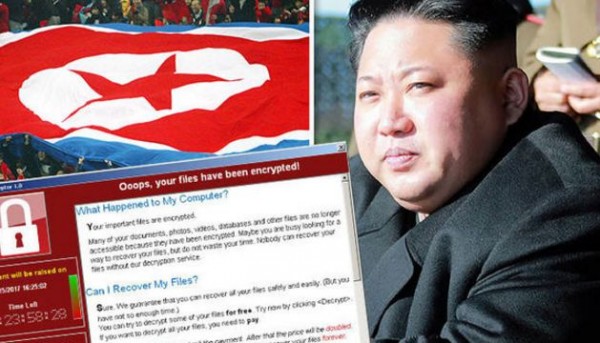North Korea Behind Many of the Devastating Cyberattacks since 2009, says US
| Arthur Dominic Villasanta | | Jun 14, 2017 09:15 PM EDT |
(Photo : Getty Images) North Kore is definitely behind the WannaCry ransomware attack.
The United States is squarely blaming North Korea for a string of devastating worldwide cyber attacks extending back to 2009, including the most recent, the global WannaCry ransomware attack last May, and the cyber break-in at Sony Pictures in the U.S. in 2014.
The U.S. Department of Homeland Security and the Federal Bureau of Investigation said North Korea will continue to rely on cyber operations to advance its military and strategic objectives, and warned that more cyberattacks by North Korea will be launched in the future.
Like Us on Facebook
As a result, the federal government has issued a rare joint alert squarely blaming the North Korean government for the attacks dating back to 2009.
The joint alert said "cyber actors of the North Korean government," given the name "Hidden Cobra" by the report, had targeted aerospace firms, financial firms, the media and critical infrastructure in the United States and around the world.
Hidden Cobra was previously called the Lazarus Group and Guardians of the Peace by western cyber investigators.
Two cyber security firms, Symantec Corporation from the U.S. and Kaspersky Lab from Russia both said it was "highly likely" Lazarus (now Hidden Cobra) was behind the WannaCry ransomware attack that infected more than 300,000 computers worldwide, and disrupted operations at banks, schools and hospitals.
Cyber security experts note that North Korean hacking activity is becoming increasingly hostile. This was evident in the case of the WannaCry ransomware attack.
The attack targeted computers running the Microsoft Windows operating system by encrypting data and demanding ransom payments ranging from $300 to $600 in the Bitcoin cryptocurrency. It began on May 12 and within a day was reported to have infected more than 230,000 computers in over 150 countries.
Hidden Cobra commonly targets systems that run older versions of Microsoft's Windows operating system such as Windows 7 that are no longer patched. It also uses Adobe Flash player vulnerabilities to gain access into targeted computers.
Hidden Cobra's capabilities include denial of service attacks (DoS), which send a flood of junk traffic to a server to knock it offline; keyloggers; remote access tools and several variants of malware. The U.S. said Hidden Cobra compromised a range of victims.
TagsUnited States, North Korea, WannaCry ransomware attack, cyber attacks, Department of Homeland Securit, Hidden Cobra
©2015 Chinatopix All rights reserved. Do not reproduce without permission
EDITOR'S PICKS
-

Did the Trump administration just announce plans for a trade war with ‘hostile’ China and Russia?
-

US Senate passes Taiwan travel bill slammed by China
-

As Yan Sihong’s family grieves, here are other Chinese students who went missing abroad. Some have never been found
-

Beijing blasts Western critics who ‘smear China’ with the term sharp power
-

China Envoy Seeks to Defuse Tensions With U.S. as a Trade War Brews
-

Singapore's Deputy PM Provides Bitcoin Vote of Confidence Amid China's Blanket Bans
-

China warns investors over risks in overseas virtual currency trading
-

Chinese government most trustworthy: survey
-

Kashima Antlers On Course For Back-To-Back Titles
MOST POPULAR
LATEST NEWS
Zhou Yongkang: China's Former Security Chief Sentenced to Life in Prison

China's former Chief of the Ministry of Public Security, Zhou Yongkang, has been given a life sentence after he was found guilty of abusing his office, bribery and deliberately ... Full Article
TRENDING STORY

China Pork Prices Expected to Stabilize As The Supplies Recover

Elephone P9000 Smartphone is now on Sale on Amazon India

There's a Big Chance Cliffhangers Won't Still Be Resolved When Grey's Anatomy Season 13 Returns

Supreme Court Ruled on Samsung vs Apple Dispute for Patent Infringement

Microsoft Surface Pro 5 Rumors and Release Date: What is the Latest?












